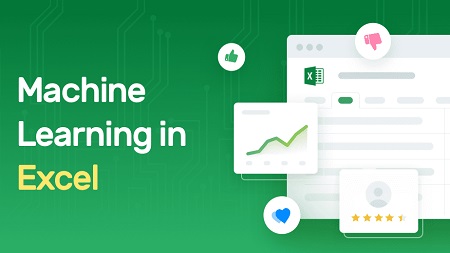
English | MP4 | AVC 1280×720 | AAC 44KHz 2ch | 29 Lessons (2h 13m) | 1.26 GB
Hi and welcome to the Machine Learning with Excel course,
Machine Learning is shaping our everyday lives and it one of the most important features of innovations in technology. The purpose of this course is to equip you with the newest methods that are applied in Machine Learning by Using Microsoft Excel. It will introduce you to a different way of thinking about data science and machine learning. This is a good way to start a career in Machine Learning since you will understand some initial concepts and gain some hands-on experience on it. We are extremely happy share with you everything that I know about Machine Learning with Excel. I promise you it is going to be worth it and you will gain a valuable set of knowledge and skills by attending this course.
This is the only course in Skill Share where Machine Learning is applied in Microsoft Excel. The reason why we chose to go with Excel is because we know that many of you are already familiar with it. We will start from ground zero and together we will continuously develop new skills from the beginning to the end of this course. In this course together we will implement a complete data science project from start to finish using Credit Risk Data. For this course we have data for around 40,000 consumers and a lot of characteristics about them such as: their level of education, their age, their marital status, where they live, if they own a home, and other useful details. We will get our hands dirty with these data and explore them in depth and you can practice all this on your own too. Moreover, you will gain access to valuable resources such as lectures, homework, quizzes, slides as well as some literature review in regard to the modelling approaches. Let’s go ahead now and see how the course structure looks like!
Table of Contents
1 Course Introduction
2 Data Science and Machine Learning
3 What is Credit Risk
4 Expected Losses and its components
5 Data Set Explained
6 Combining Data
7 Creating Gender Dummy Variables
8 Creating Dummy Categorical variables part 2 , ownership final
9 Creating Dummy Categorical Variables- Relationship Status
10 Coding of the Dependent Variable
11 Weight of Evidence- Male and Female
12 Weight of Evidence- Rural Vs Urban
13 Weight of Evidence- Educational Level
14 Weight of Evidence- Grade
15 Weight of Evidence- Work Sector and Residence
16 Weight of Evidence- Relationship Status
17 Continues Variables
18 Coding Age in Years
19 Coding Maturity
20 Multicollinarity
21 Weight of Evidence for Age in Years
22 Weight of Evidence Maturity
23 Creating the Variables for Excel
24 Coding of Grade
25 Installing Real Statistics
26 Problems with Real Statistics
27 Running the Machine Learning Algorithm
28 Results Interpretation- Coefficients, P-values, T-statistics, Confidence Intervals
29 Applying the Coefficients
Resolve the captcha to access the links!